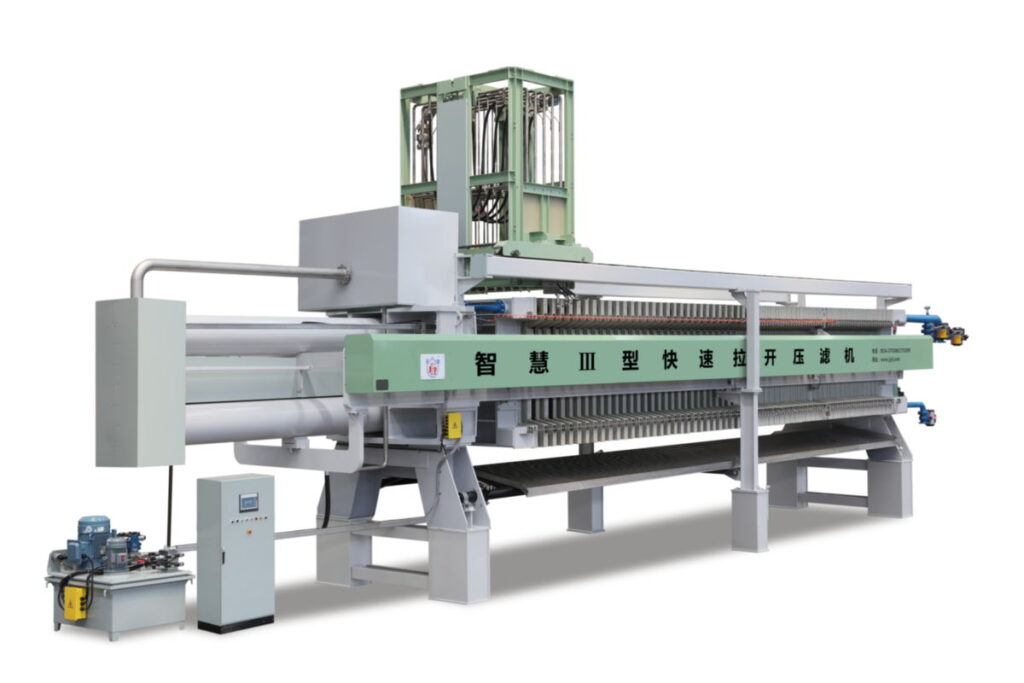How do filter presses work?
Filter presses work by separating solids from liquids using pressure and filtration.
Filling
The mixture of solids and liquids is pumped into the filter press and fills the spaces between the filter plates, called the filter chamber.
Filtration
Once the filter chamber is full, a pump increases the pressure inside the chamber, forcing the liquid component of the mixture through the filter cloth and out of the press, leaving the solids behind on the filter cloth. The filtered liquid is collected in a channel at the bottom of the press and discharged.

Cake Formation
As more and more liquid is filtered out, the solids accumulate on the filter cloth, forming a solid cake. The cake continues to grow until the filtration process is complete.
Cake Removal
Once the filtration process is complete, the pressure is released, and the filter plates are separated. The solid cake is then removed from the filter plates by various means, such as scraping, shaking or washing.
Plate Cleaning
The filter plates are then cleaned and reassembled for the next filtration cycle.
Filter presses by Filter press supplier can be operated in different configurations, such as batch or continuous operation, and can use different types of filter cloths, such as cloth or membrane filters, depending on the specific application. Some filter presses also incorporate additional features, such as automatic plate shifting and cake washing, to improve the filtration process and increase efficiency.
Filter presses are an effective and efficient means of separating solids from liquids and are used in a wide range of applications across various industries.

Comments are closed.